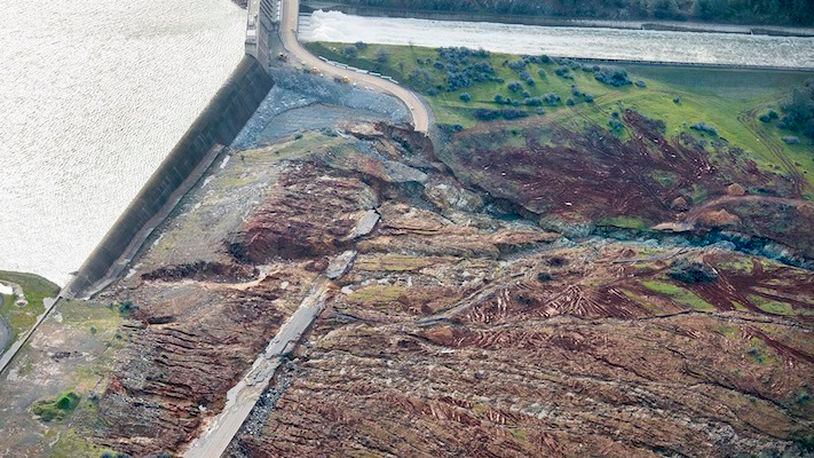“Current models suggest the dice are loaded toward an increased probability of this kind of year,” said Columbia University climate scientist A. Park Williams.
Parched earth could soon return, say climate scientists, who predict a worsening spiral of intense California drought followed by periods of flooding as the planet gets warmer.
“In 15 more years, a repeat of a record-breaking drought like the one we just had is a real possibility — as opposed to a kind of an out-of-left-field possibility that it would have been in the absence of a global warming trend,” Williams said.
The extreme weather is making it increasingly difficult for California to manage its flood-control and water management infrastructure.
“Our hydrology and climate are changing. Our infrastructure is aging,” said California Natural Resources Secretary John Laird. “As the assumptions and understandings of the earlier eras give way to better science, advances in technology and new understandings, the limitations of today’s failing water infrastructure means we must invest in the infrastructure of tomorrow.”
President Donald Trump is promising a $1 trillion national infrastructure package. But Trump has referred to climate change as a “Chinese hoax” and it’s not clear how much he’s planning direct federal investment in projects as opposed to public-private partnerships such as toll roads.
Sen. James Inhofe, an Oklahoma Republican and a leading Washington denier of human-caused climate change, said anyone who expects Trump to reverse course on climate is “reading him wrong.”
California is naturally vulnerable to droughts and flooding, said Jay Lund, who directs the Center for Watershed Sciences at the University of California, Davis. Lund said it was too soon to say whether the five-year drought followed by torrential rainfall was a result of global warming.
“You tend to see these kinds of floods and droughts anyway. But there is some reason to think that we might see them more frequently and in greater extremes in the future,” Lund said.
“Certainly that’s something we have to be prepared for,” he said.
Climate scientists believe the lack of rainfall that created California’s ruinous drought was a result of natural weather variability. There is a growing scientific consensus, however, that the rising temperatures linked to the burning of fossil fuels made the drought more intense.
Columbia University’s Williams authored a major study in the journal Geophysical Research Letters that estimated global warming had worsened California’s drought by 15 percent to 20 percent.
California is on average about 2.5 to 3 degrees warmer than it would be without human-caused global warming, Williams said. The higher temperatures mean more water is pulled from the soil. So the dry years that naturally occur in the state are even drier.
“That means future droughts will tend to be more intense than they would have been otherwise,” he said.
Climate forecasts also call for periods of extreme rain, although Williams said there was no certainty that California’s recent deluge was linked to global warming.
California’s climate is capable of producing major flooding on its own. The Great Flood at the end of 1861 submerged Sacramento and forced Gov. Leland Stanford to paddle to the Capitol in a rowboat to be inaugurated.
But global warming increases the odds, said Stanford University climatologist Noah Diffenbaugh.
“A warming atmosphere holds more water. There’s more water vapor in a warmer atmosphere. We’re seeing that globally,” he said. “This increases the probability of extreme precipitation when precipitation occurs.”
Snowpack also melts earlier and more precipitation falls as rain instead of snow in a warming planet, he said. California’s aging water-management system wasn’t built for this, he said.
“It’s clear we have a new climate, a different climate than a half a century ago,” Diffenbaugh said.
About the Author
